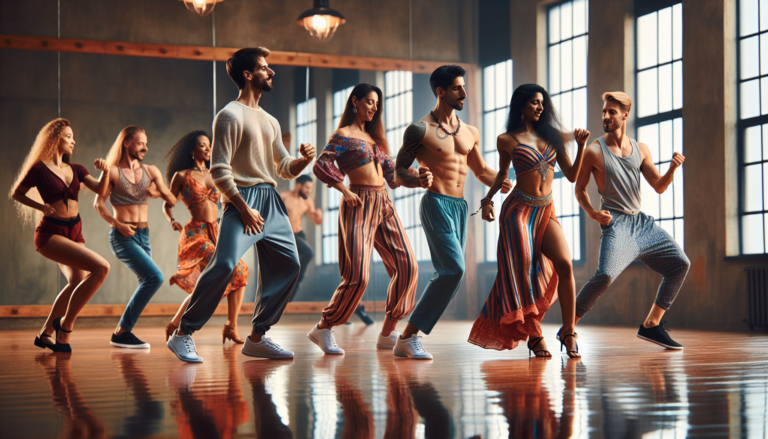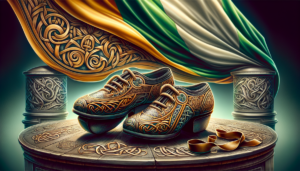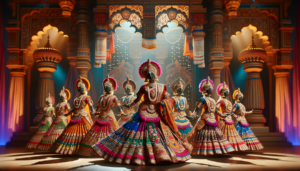Dance pedagogy is a multifaceted field that combines the art of dance with the science of teaching. It focuses on the methods and practices used to educate students in various dance genres, supporting diverse groups of learners and enhancing the overall learning experience in dance education. As dance continues to gain recognition as a valuable and enriching discipline, the importance of effective dance pedagogy becomes increasingly evident.
Introduction to Dance Pedagogy
Defining Dance Pedagogy
At its core, dance pedagogy is defined as the art and science of teaching dance. It encompasses the strategies, techniques, and approaches used by educators to facilitate learning in the context of dance education. Dance pedagogy recognizes the complexity of dance as an art form, acknowledging that it is difficult to separate the dancer from the dance itself, which is characterized as rhythmic movement of the body through space and time.
Importance of Dance Pedagogy in Education
Dance education integrates artistic and educational mediums, engaging students’ physical, mental, and spiritual attributes. By enriching life, society, and academia through the power of dance, effective pedagogy plays a crucial role in unlocking the potential of dance as a transformative educational tool. Recognized as a healthy, lifelong activity, dance education spans from early childhood experiences to professional performance, highlighting the need for well-equipped dance educators at all levels.
The benefits of dance education are far-reaching, supporting multiple intelligences and enhancing learning across various disciplines. Participation in dance has been linked to higher academic performance, increased self-esteem, and improved social skills. With diversity in dance education offering options for students of different backgrounds and learning styles, effective pedagogy ensures that every learner has the opportunity to engage with and benefit from the art of dance.
Key Teaching Methods in Dance Pedagogy
Traditional vs. Modern Teaching Methods
Dance pedagogy has evolved over time, with traditional teaching methods being complemented by modern approaches that emphasize creativity, individuality, and student-centered learning. While traditional methods, such as those used in classical ballet training, focus on discipline, technique, and repetition, modern pedagogical approaches prioritize exploration, improvisation, and personal expression.
Effective dance educators strike a balance between these two worlds, recognizing the value of both structure and freedom in dance education. By combining the best elements of traditional and modern teaching methods, dance teachers can create a well-rounded learning experience that caters to the diverse needs and learning styles of their students.
Incorporating Technology in Dance Education
In the 21st century, technology has become an increasingly important tool in dance pedagogy. From video tutorials and online resources to interactive software and virtual reality experiences, technology offers new ways for students to engage with dance education. Dance educators who embrace technology can expand their reach, enhance their teaching methods, and provide students with innovative learning opportunities.
However, it is essential to use technology thoughtfully and strategically, ensuring that it supports rather than replaces the human connection and physical experience that lies at the heart of dance education. By carefully integrating technology into their pedagogical approach, dance teachers can create a dynamic and engaging learning environment that prepares students for the challenges and opportunities of the modern dance world.
Exploring Different Dance Genres
Dance pedagogy encompasses a wide range of dance genres, each with its own unique characteristics, techniques, and teaching methods. Understanding and appreciating the diversity of dance styles is essential for effective dance education, as it allows teachers to cater to the interests and abilities of their students while exposing them to new forms of artistic expression.
Creative Dance
Creative dance is a genre that emphasizes improvisation, personal expression, and exploration of movement. Often taught to children and beginners, creative dance encourages students to tap into their imagination and develop their own unique movement vocabulary. Effective pedagogy in creative dance involves fostering a safe and supportive environment where students feel free to take risks, experiment, and express themselves through movement.
Ballet Techniques
Ballet is a highly technical and structured form of dance that has evolved over centuries. Known for its grace, precision, and athleticism, ballet requires a strong foundation in technique and discipline. Effective ballet pedagogy focuses on developing correct alignment, strength, flexibility, and musicality, while also nurturing artistry and expression.
Jazz Dance
Jazz dance is a lively and expressive style that originated from African American cultural influences. Characterized by its energetic movements, syncopated rhythms, and improvisational elements, jazz dance offers students the opportunity to explore their own personal style and creativity. Effective jazz pedagogy emphasizes the development of coordination, musicality, and performance skills, while also fostering a sense of community and collaboration among students.
Modern Dance
Modern dance emerged in the late 19th and early 20th centuries as a rebellion against the strict rules and conventions of classical ballet. Focusing on freedom of movement, personal expression, and the exploration of new movement vocabularies, modern dance has evolved into a diverse and ever-changing art form. Effective modern dance pedagogy encourages students to develop their own unique movement style, while also providing a strong foundation in technique and composition.
Tap Dance
Tap dance is a percussive dance style characterized by the rhythmic tapping of the feet. Originating from African American and Irish American cultural influences, tap dance has evolved into a complex and highly technical art form that requires precision, musicality, and improvisational skills. Effective tap pedagogy focuses on developing a strong sense of rhythm, coordination, and timing, while also encouraging students to explore their own creative expression through improvisation and choreography.
Contemporary Dance
Contemporary dance is a genre that incorporates elements of various dance styles, including modern, jazz, and ballet. Known for its versatility, athleticism, and expressive qualities, contemporary dance offers students the opportunity to explore a wide range of movement possibilities. Effective contemporary dance pedagogy emphasizes the development of technical proficiency, artistic expression, and creative problem-solving skills, while also fostering a sense of individuality and collaboration among students.
Hip Hop Dance
Hip hop dance is a dynamic and ever-evolving style that originated from the hip hop culture of the 1970s. Characterized by its energetic movements, rhythmic complexity, and improvisational elements, hip hop dance has become a global phenomenon that continues to influence popular culture and dance education. Effective hip hop pedagogy focuses on developing a strong sense of rhythm, musicality, and personal style, while also fostering a sense of community and cultural awareness among students.
Benefits of Dance Education
Dance education offers a wide range of benefits for students of all ages and backgrounds. From physical and mental health to social and emotional development, the positive impact of dance education extends far beyond the studio walls.
Physical Benefits
Participation in dance education has been shown to improve physical health and fitness, including increased flexibility, strength, endurance, and coordination. Regular dance practice can also help to improve posture, balance, and body awareness, reducing the risk of injury and promoting overall well-being.
In addition to the physical benefits, dance education has been linked to improved mental health outcomes, such as reduced stress, increased self-esteem, and enhanced mood. The creative and expressive nature of dance allows students to release tension, express their emotions, and develop a positive relationship with their bodies.
Social and Emotional Benefits
Dance education provides a unique opportunity for students to develop important social and emotional skills, such as teamwork, communication, and empathy. Through collaborative choreography and performance experiences, students learn to work together towards a common goal, developing a sense of community and belonging.
The supportive and inclusive environment of the dance studio also fosters a sense of acceptance and respect for diversity, as students learn to appreciate and celebrate the unique qualities and contributions of their peers. This can lead to increased self-confidence, improved social relationships, and a greater sense of empathy and understanding towards others.
Intellectual Development
Engaging in dance education has been shown to enhance cognitive development and academic performance. The complex and multi-sensory nature of dance engages multiple areas of the brain, including those responsible for memory, attention, and problem-solving.
Studies have found that students who participate in dance education often demonstrate improved academic achievement, particularly in areas such as mathematics and reading comprehension. The creative and improvisational aspects of dance also foster the development of critical thinking, creativity, and innovation skills, which are increasingly valuable in the 21st-century workforce.
Resources for Dance Educators
Effective dance pedagogy requires access to high-quality resources and ongoing professional development opportunities. From books and publications to workshops and online communities, there are a wide range of resources available to support dance educators in their practice.
Books and Publications
Dance educators can benefit from a wide range of books and publications that cover topics such as dance history, technique, pedagogy, and curriculum development. Some essential resources for dance teachers include:
- “Dance Pedagogy for a Diverse World: Culturally Relevant Teaching in Theory, Research and Practice” by Nyama McCarthy-Brown
- “Dance Teaching Methods and Curriculum Design” by Gayle Kassing and Danielle M. Jay
- “Dance Anatomy” by Jacqui Greene Haas
- “Safe Dance Practice” by Edel Quin, Sonia Rafferty, and Charlotte Tomlinson
These resources offer valuable insights into the art and science of dance education, providing dance teachers with the tools and knowledge they need to create effective and engaging learning experiences for their students.
Workshops and Training Programs
Attending workshops and training programs is an important way for dance educators to stay current with the latest trends and best practices in dance pedagogy. Many professional dance organizations, such as the National Dance Education Organization (NDEO) and the International Association for Dance Medicine and Science (IADMS), offer regular workshops and conferences that provide opportunities for professional development and networking.
In addition to in-person workshops, there are also many online training programs and webinars available for dance educators. These virtual learning opportunities allow teachers to access high-quality professional development from the comfort of their own homes or studios, making it easier to fit continuing education into their busy schedules.
Online Resources and Communities
The internet has opened up a wealth of resources and opportunities for dance educators to connect with colleagues, share ideas, and access valuable teaching tools. Online communities, such as social media groups and forums, provide a platform for dance teachers to network, collaborate, and seek advice from experienced professionals.
There are also many websites and online resources dedicated to dance education, offering lesson plans, video tutorials, music selections, and other teaching aids. Some popular online resources for dance educators include:
- Dance Teacher Web (www.danceteacherweb.com)
- Dance Education Laboratory (DEL) (www.danceedlab.com)
- Dance Advantage (www.danceadvantage.net)
- National Dance Education Organization (NDEO) (www.ndeo.org)
By leveraging the power of online resources and communities, dance educators can expand their knowledge, enhance their teaching practice, and connect with a global network of passionate and dedicated professionals.
Conclusion
Future of Dance Pedagogy
As the field of dance education continues to evolve, so too will the methods and practices of dance pedagogy. With the increasing recognition of dance as a valuable and enriching discipline, there is a growing need for innovative and effective teaching approaches that can meet the diverse needs of 21st-century learners.
The future of dance pedagogy will likely be shaped by advances in technology, a greater emphasis on diversity and inclusion, and a continued focus on the holistic development of students. Dance educators who stay attuned to these trends and remain committed to ongoing professional development will be well-positioned to lead the way in shaping the future of dance education.
Final Thoughts
Effective dance pedagogy is essential for unlocking the transformative power of dance education. By combining the art of dance with the science of teaching, dance educators can create meaningful and engaging learning experiences that support the physical, social, emotional, and intellectual development of their students.
Through a commitment to ongoing professional development, a willingness to embrace new ideas and approaches, and a deep passion for the art of dance, educators can continue to inspire and empower the next generation of dancers, artists, and global citizens. The future of dance education is bright, and the role of effective dance pedagogy in shaping that future cannot be overstated.






